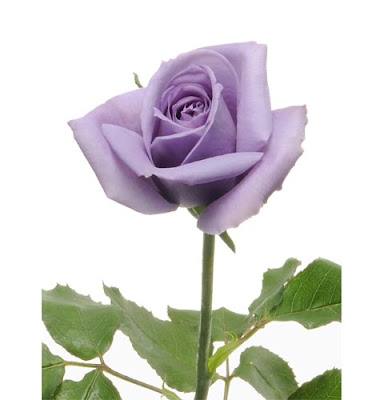Not so True Blue

In 2005, Suntory and Florigene announced they had created the world's first blue rose. Five years later, the first blue rose bloom is on sale in Japan for about $25 (Australian).
You might think with the amazing array of flowers in the world we’d be happy to sit back and enjoy them all, but of course we are forever breeding bigger and brighter flowers.
Not only that, but we seem to want what we can’t have, such as a blue rose. When I was an undergraduate at the University of Melbourne 30 years ago, work was already well under way in the School of Botany trying to get the blue-colour gene into rose flowers.
Now the blue rose exists and you can buy one for Australia Day if you like. Although I realise it is not an Australian flower, and it's not 'true blue'...
Although breeders have crossed various coloured roses to come up with bluish blooms, this one has a pigment called delphinidin – from a gene taken out of a Petunia (presumably the pigment was first found in a Delphinium, which has a vivid blue bloom, and then later discovered in various flowers such as the Petunia).
So depending upon your view of genetically modified organisms – and your desire to see a blue rose – you’ll think this is either exciting or troubling news.
Although there are plenty of blue flowers in nature and in our gardens (e.g. locally we have Dampiera and Scaevola, and in gardens things like hydrangeas, plumbagos and violets) blue is a popular target for plant breeders because there are few ‘true blue' cut-flowers.
It was about six years ago that a purplish flowered Camellia was rediscovered in Vietnam, to the excitement of camellia breeders, and a blue carnation was created in 1995.
Why aren’t there any blue roses naturally? It’s probably related to their evolution, and the pollinators that evolved with them across the northern hemisphere. It seems that blue just didn’t appeal to the birds or bees that pollinated them.
A few years ago I was discussing with some of our Gardens’ botanists why some flower colours are more common in some areas than others, and it was mentioned that there are very few red flowers in alpine areas, at least in Australia. It was suggested that suggested that it may be due to the lack of honeyeaters (birds) in these environments, perhaps due to it being too windy.
Now it seems we don't have to reply on pollinators to determine our flower colours. If you want to track down Rosa 'Suntory Applause', you can find out more on the Suntory website.
Image: From Nikkei Design website.
Comments